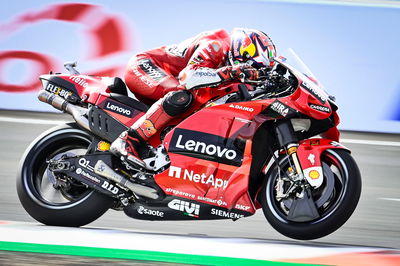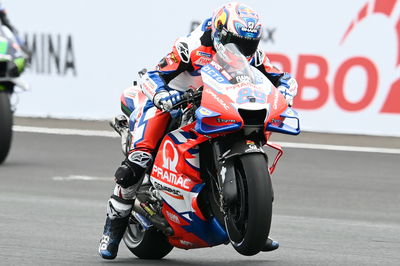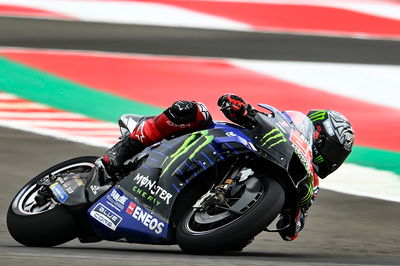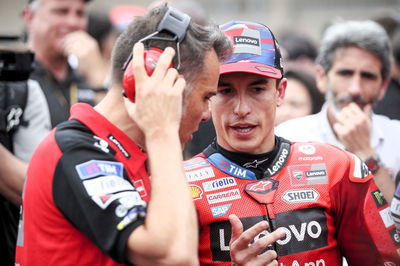Front ride-height ban 'unfair', 'cannot pick and choose'

While all MotoGP manufacturers now have a rear ride-height device, as well as a 'single use' front and rear holeshot system for the start of a race, Ducati is currently the only manufacturer with a repeatable front-lowering ride-height device for corner exit.
Lowering the bike helps to resist wheelies under hard acceleration, but while the front system has been under development by Ducati's MotoGP riders since winter testing it is yet to be fully refined and currently not always used.
Nevertheless, members of the Grand Prix Commission were asked to consider 'two alternative proposals' for the future of ride-height devices with the 'objective of preventing further performance improvements and development cost increases'.
It is not clear what the other proposal was but a ban on the front system for 2023 was voted through by unanimous agreement of the four parties; MSMA, IRTA, Dorna and FIM.
The MSMA (manufacturers) vote was carried by Ducati's rivals supporting the ban. Rear ride-height devices, plus front and rear holeshot systems, will remain legal.
"I think the ban is unfair in my opinion," said factory Ducati rider Jack Miller. "Ducati have spent money, more time than anything, developing this system and when you go and do all that you take resources away from other areas of the bike. That maybe you could be spending time and energy developing.
"At the end of the day Ducati is not a massive company like some of the others and for [the others] to be able to basically complain and put in a rule like this, but say the rear is still okay… because the other teams were trying to [ban] that at the beginning, because they didn't want to be behind us or develop, and now everyone has it they all want to keep it.
"For me that is not fair. You cannot pick and choose which rules you want or don’t want. And you can still use the front ride-height device at the start [holeshot], which doesn't make sense to me.
"If we use it or don’t use it, it's completely up to us, but we have it and we've worked to develop it. And the others can either try to catch-up or not. Simply up to them. But I don’t think you should be able to tell a team what they can and can't use, if it's inside the rules. Not make up a rule to ban it."

Pramac Ducati's Jorge Martin took a similar view, pointing out the time that had been dedicated to working on the front device in pursuit of future gains.
"The big problem here is that we spent a lot of time working on it and trying to develop this thing and finally we won't use it next year," Martin said.
"For the moment I'm not using it but the main problem I think is the time that we spent and time we didn't spend on other things. So I think we lost a lot of time during the pre-season.
"I think in Malaysia on the second day I did like 20 laps because of [working on] this. It's a pity."
Miller's factory team-mate Francesco Bagnaia doesn't think the ban will hurt Ducati in the long run.
"Ducati is always more in front than anyone else on these things and we'll study other areas now," he said.
Aprilia's Aleix Espargaro had some sympathy for Ducati's situation, but is pleased the device has been banned.
"I can understand the position of Ducati, they followed the rules, they invested money and time, which is sometimes even worse than money," Espargaro said.
"Because as they said it's not just about the money but the time they were developing the front ride-height device they were not working on the engine, for example, or another system.
"So they were the best ones to do this [device] but in terms of safety, my point of view is that it's not safe. So I think the championship has been good to ban this, but I can understand that [Ducati] are not happy for sure."












